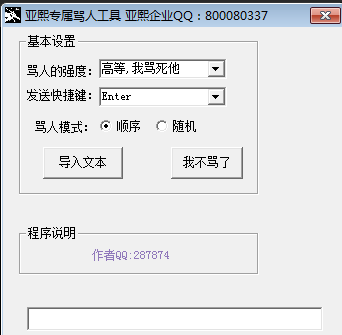Basic SQL sentence
时间:2022-03-10 17:45
create database ST; use st; create table Student( Sno varchar(10) primary key , Sname varchar(15) , Ssex varchar(2) , Sage int , Sdept varchar(10) ); create table Course( Cno varchar(10) primary key , Cname varchar(15) not null, Cpo varchar(10) , Ccredit int foreign key (Cpo) references Course(Cno), ); --if you want to study Cno,you must study Cpo first --so Cpo must come from Cno ,it`s a foreign key create table SC( Sno varchar(10) , Cno varchar(10), Grade int, foreign key (Sno) references Student(Sno), foreign key (Cno) references Course (Cno), ); insert into Student values(‘200215121‘,‘李勇‘,‘男‘,20,‘CS‘); insert into Student values(‘200215122‘,‘刘晨‘,‘女‘,19,‘CS‘); insert into Student values(‘200215123‘,‘王敏‘,‘女‘,18,‘MA‘); insert into Student values(‘200215125‘,‘张立‘,‘男‘,19,‘IS‘); ---now can`t insert cpo so cpo is 5n167n6 insert into Course(Cno,Cname,Ccredit) values(‘1‘,‘数据库‘,4); insert into Course(Cno,Cname,Ccredit) values(‘2‘,‘数学‘,2); insert into Course(Cno,Cname,Ccredit) values(‘3‘,‘信息系统‘,4); insert into Course(Cno,Cname,Ccredit) values(‘4‘,‘操作系统‘,3); insert into Course(Cno,Cname,Ccredit) values(‘5‘,‘数据结构‘,4); insert into Course(Cno,Cname,Ccredit) values(‘6‘,‘数据处理‘,2); insert into Course(Cno,Cname,Ccredit) values(‘7‘,‘PASCSL语言‘,4); insert into SC values(‘200215121‘,‘1‘,92); insert into SC values(‘200215121‘,‘2‘,85); insert into SC values(‘200215121‘,‘3‘,88); insert into SC values(‘200215122‘,‘2‘,90); insert into SC values(‘200215122‘,‘3‘,80); --edit table alter table student add Sgrade int; alter table student drop column Sgrade; --edit the data type of column alter table student alter column Sname varchar(15); --alter varchar(15) to varchar(20) alter table course alter column Cname varchar(20); alter table student alter column Sname varchar(20); --insert insert into course(Cpo)values(‘1‘); select Sno,Sname from Student where(Ssex=‘男‘); update course set Cpo =‘5‘ where Cno=‘1‘; select * from Course update Course set Cpo=‘‘ where Cno=‘2‘ update Course set Cpo=‘1‘ where Cno=‘3‘ update Course set Cpo = ‘6‘ where Cno=‘4‘ update Course set Cpo =‘7‘ where Cno=‘5‘ --can`t updata null update Course set Cpo=‘‘ where Cno=‘6‘ update Course set Cpo=‘6‘ where Cno=‘7‘ --lower function select Sname,LOWER(Sdept) from Student; select Sname,Sdept from Student select Sno from SC; --the distinct key can cancel the repeated result,distinct coresponding ALL ,and the default is all select DIStinct Sno from SC select Sname,Sage from Student where Sage>=20; select Sname,Sno from Student where Sno=(select distinct Sno from SC where Grade<85); select Grade from SC --between and is a open section it include 19 and 20 select Sname,Sdept,Sage from Student where Sage BEtween 19 and 20; select Sname,Ssex,Sdept from Student where Sdept IN(‘CS‘,‘MA‘); select * from Student; select * from Student Where Sage not between 19 and 20 ; --LIKE --[not] like ‘<String>‘ string include ? / * --if String did`nt include any wildcard ,it can be instead of by ‘=‘ use st; go select * from Student where Sno like‘200215121‘; --one chinese word instead of two string position select Sname from Student --where Sname like ‘李_‘ where Sname like ‘李%‘; select Sname from Student where Sname not like ‘李%‘; --transforlate _ & to common symbol use escape -- this sentence instruct that the char follow ‘\‘ is just a common symbol select Cno from Course where Cname like ‘DB\_Design‘escape ‘\‘ ; update SC set Grade=NULL where Cno=‘1‘; -- null query select Sno,Cno from SC where Grade is null; select * from SC; select * from Student where Ssex=‘女‘ and Sage <21 ; -- in just equals many ‘or‘ --order by desc ->>down asc ->>up select * from Student --order by Sage DESC ; order by Sage ASC ; alter table SC add Constraint chk_Grade check(Grade>0 and Grade <100); alter table SC drop constraint chk_Grade ; alter table Student add loc int ; alter table Student alter column loc varchar(20) ; alter table Student drop column loc ; --distinct cancel repeated values /*count ->>count the num of row count( column) ->> count the num of values in column sum(column ) ->> count */ select COUNT(*) from Student
Basic SQL sentence,布布扣,bubuko.com



























